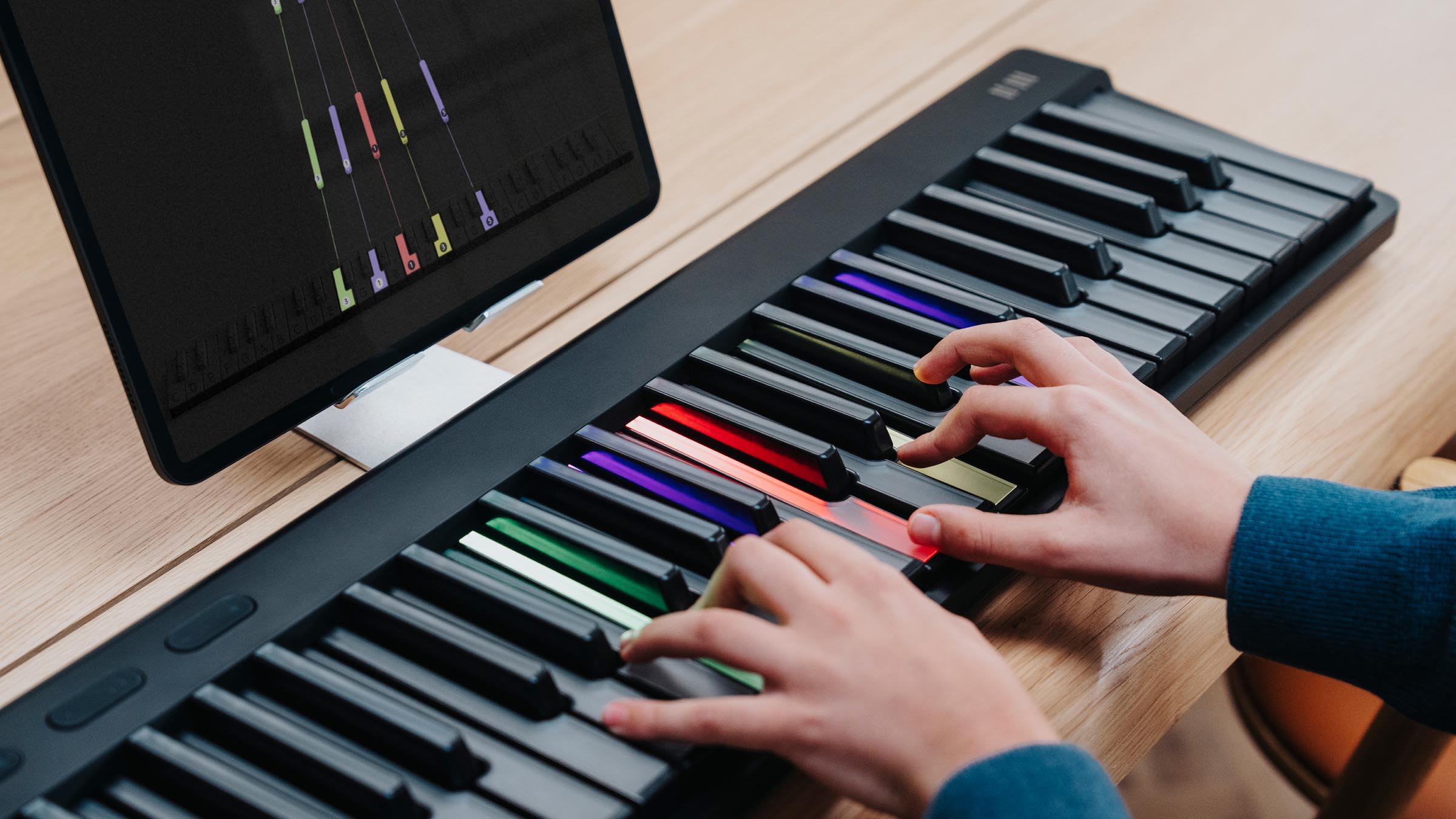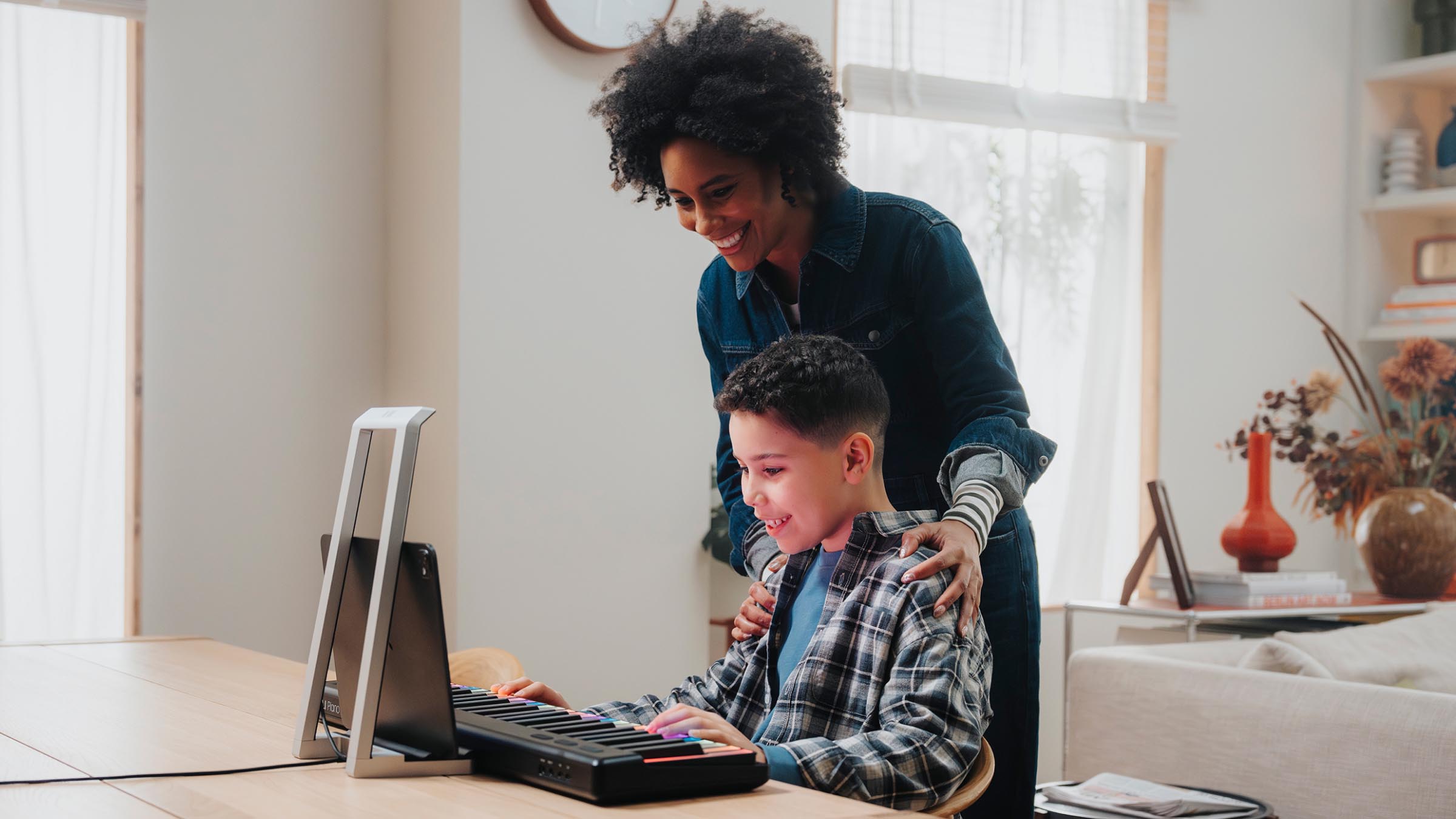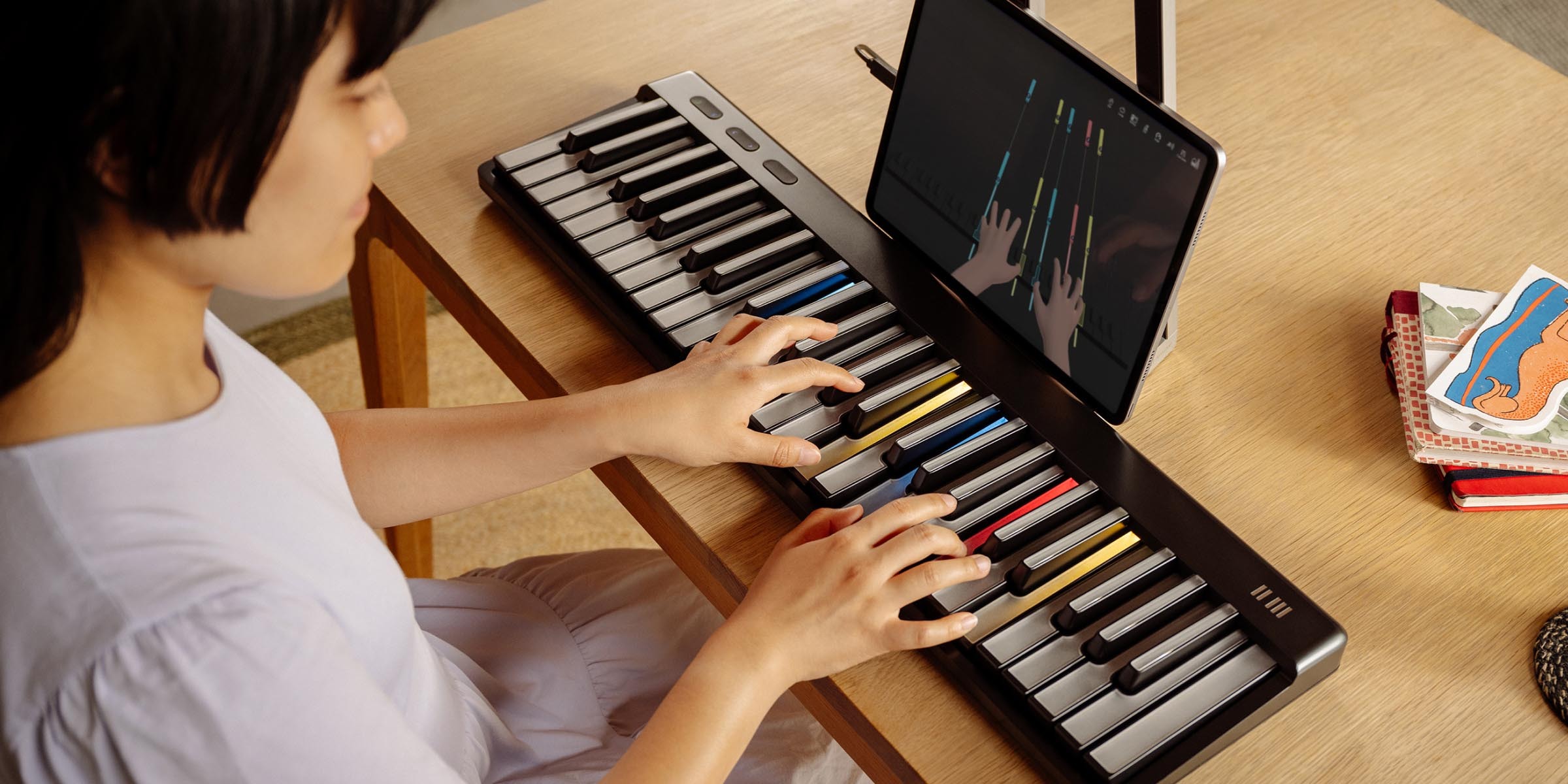How to play piano with two hands
Learn to play full arrangements of your favorite songs with ROLI Piano
How to play piano with two hands
When we’re learning to play a new instrument, it helps to start out with the very basics. We begin with figuring out the simplest possible way to make a sound, then, when we’re ready, we begin to string notes together into our first simple tunes.
If you’ve taken your first steps towards learning piano, you’re likely there already; you’ll have grasped the basic mechanics and had your first taste of success with “Chopsticks,” “Mary Had a Little Lamb,” or — if you’re using the ROLI Learn app — one of your favorite contemporary songs.
The joy of playing our first simple melodies is infectious, and it naturally leads us to the question of, “what’s next?” We can, and should, continue learning tunes with one hand, memorize scales, and begin to play full chords, but if you’re already looking for your next big “a-ha” moment, you may well be turning your attention towards two-handed playing.
When we think of piano players, whether it’s Rachmaninoff or Elton John, we often conjure up images of both hands flying majestically up and down the keyboard, covering great distances, sometimes in unison and sometimes apart. It may seem like a stretch (no pun intended), but the skills you’ve already picked up are going to serve you well in your ambidextrous ambitions.

You really just need three things: a keyboard big enough for both hands, someone (or something) to show you the way, and some time to practice.
For the first of those three, we’ve got you covered. You have two options: you can double up on the 24-key Piano M to give yourself four octaves of room to maneuver — they click together magnetically to become one 48-key keyboard. Or, for the ultimate home piano-learning setup, check out the brand-new ROLI Piano. Our flagship piano keyboard comes with 49 keys, and each one is semi-weighted (so it feels great to play) and full-sized (so everything you learn translates directly to a real piano).
The best bit? Both of them feature our Brightkey technology. Paired with a subscription to the ROLI Learn app, the keys glow in time with the song or lesson you’re currently playing through. You just need to play the right key, at the right time — just like a video game.
The aforementioned ROLI Learn app, of course, is the second part of the puzzle. It comes with a growing library of hit contemporary songs and classical pieces as well as interactive video lessons from real piano teachers, engaging games and exercises, and a Playground mode for you to practice your new skills. It also features a rapidly expanding selection of lessons aimed specifically at teaching you to play with two hands.
The third ingredient is down to you. Yes, you’ll need to make time for practice, but don't worry — it may not be as much as you think. In fact, our experts recommend just ten minutes a day for you to see real, sustainable progress. And, with the ROLI Learn app, you’ll go at your own pace and on your own schedule.
Our top tips for two-handed playing
You’ve chosen your keyboard, you’ve downloaded the app, and you’re ready to go? Here’s a selection of expert advice to help you make the most of your practice time.
Right hand first…
It’s great to set our sights on a lofty goal — perhaps you already have a tough two-handed piece in mind. The temptation with these kinds of goals can often be to go all-out, however, and while that enthusiasm will always be an asset, it’s important to be methodical in our approach. And when it comes to playing with both hands, the fastest and most effective way to learn is to make sure we’re confident with one.
For most of us, this means focusing exclusively on the right hand (which we often use to play the trickiest melodic parts and most complex chords) to begin with. Once we’re ready to start adding baselines and chords with the left, it’s important to keep revisiting right-handed exercises and replaying those now-familiar tunes.
When you start incorporating your left hand, it’ll demand a good amount of concentration. If you’re already feeling comfortable with the right hand, it’ll be a lot easier to focus on what the left is doing.

… Then the left.
Obviously, to play with both hands, we'll need to involve the left one at some point. Focusing on it in isolation is a great way to do that.
It may be tempting to think of the right hand as doing all the work (especially if you’re already comfortable with it), but that won’t always be the case. You’ll often find tricky chords, complex basslines, or counter-melodies in the left hand. That means all those right-handed skills we’ve been learning are needed on the other side too.
The good news is that you’ll have been learning these skills already — you’re not starting from scratch at all. And you’ve also learned how to learn. Learning to use your left hand by itself is a matter of repeating the process you’ve already been through with the right. A great way to practice is to challenge yourself with songs or melodies you already know how to play with your right hand. And when you learn something new, try it both ways.
Try playing in unison
In music, unison means that two or more parts are the same. We often see it in reference to multiple instruments — when the first and second violins are assigned the same melody in an orchestra, for example, or when two guitars play the same riff in a rock band.
It also applies to playing the same thing with both hands at the same time on piano. There’s only one of each key, of course, so we need to space them out. Typically, we do this by an octave. By learning to play parts in unison, we can get used to the feeling of using both hands together without having to deal with learning new parts simultaneously or worrying too much about hand independence.
As simple as it sounds, this ought to be slightly challenging. Keep in mind that even if both hands play the exact same melody, the fingering will be different, owing to the symmetry of our bodies. If you find this exercise tricky, try going back to playing with one hand at a time, then give it another go when both feel similarly comfortable.
“Splitting” our hands can be tricky — so take it slow
If you’ve ever tried to pat your head and rub your belly (or vice versa), you’ll know that doing different things with each hand can be surprisingly difficult. One thing to bear in mind here is that there are different degrees of “different”.
We don’t need to jump right from playing in unison to playing seemingly unrelated things with each hand. Instead, we can focus on parts that differ in only a few ways from one another. The first two-handed lesson you’ll come across in the ROLI Learn app is a great example of this. Here, you’ll play different melodies in each hand, but they share the exact same rhythm — so keeping track of timing should feel pretty natural by the time you reach it.
From here, the sky is the limit — you may find songs with contrary motion (one hand moves up while the other moves down), where the dynamics in each hand are very different (perhaps a delicate melody over a booming bass), and even where each hand plays in an entirely different time signature (known as a polyrhythm).
It may seem daunting now, but take things one step at a time, go at your own pace, and you’ll soon have mastered two-handed parts to some of your favorite songs.

Two-handed lessons in the ROLI Learn app
Two-handed lessons are scattered throughout your ROLI Learn journey, and two-handed parts are available for many songs featured in the app. For some specific help, however, look for the new video lessons at the end of sections 1 and 2. Here, you’ll find a total of 28 lessons and 6 new challenges with which to test your skills as you progress
Save on ROLI Piano
ROLI Piano is available to preorder. Secure yours now to save $200 / £180 / €200. You can also bundle in Airwave to save $300 / £250 / €300, unlock personalised progression, and get tailored feedback on your playing — with either one hand or both.
Join the ROLI community